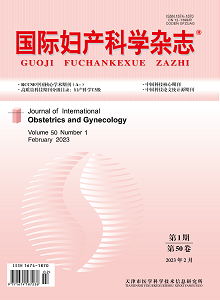Objective: To establish and validate a nomogram model which can predict the risk of macrosomia in patients with hyperglycemia in pregnancy (HIP). Methods: A retrospective analysis was performed on the data of pregnant women with HIP who deliveried at Taiyuan Maternal and Child Health Care Hospital from November 2020 to February 2022. Multivariate logistic regression analysis was used to screen independent influencing factors for the occurrence of macrosomia, R software was used to construct the column line graph model, the area under the receiver operator characteristic curve (AUC) was used to assess the efficacy of the model, and decision curve analysis (DCA) was used to evaluate the clinical value of the model. Results: ①A total of 1 098 HIP medical records were included in the model, and 92 (8.38%) pregnant women gave birth macrosomia. All records were randomly divided into training set (761 cases) and test set (337 cases) according to 7∶3 ratio. ② The multivariate logistic regression analysis revealed that multiparous history (OR=3.19, 95%CI: 1.58-6.54, P=0.001), family history of hypertension (OR=2.28, 95%CI: 1.06-4.90, P=0.034), pre-pregnancy body mass index (OR=1.18, 95%CI: 1.08-1.30, P<0.001), biparietal diameter (OR=13.52, 95%CI: 4.04-48.38, P<0.001) and abdominal circumference (OR=2.83, 95%CI: 2.17-3.81, P<0.001) were independent risk factors for macrosomia and the column line graph model was developed accordingly. ③ The AUC on the training and test sets were 0.93 (95%CI: 0.90-0.97) and 0.92 (95%CI: 0.88-0.97), respectively. No significant difference was observed on the area of AUC (P=0.69). The results indicated that the model worked well in both the training and test sets. ④ DCA results showed that when the threshold probability (Pt) ≥7%, the use of this nomogram prediction model can improve the net benefits of pregnant women. That is, the model has certain clinical value. Conclusions: A nomogram model which could assess the risk of macrosomia in patients with HIP was preliminarily established. The model has certain accuracy and is expected to be a quantitative tool to guide clinical timing of delivery, individual labor process monitoring, and decision of delivery mode.

